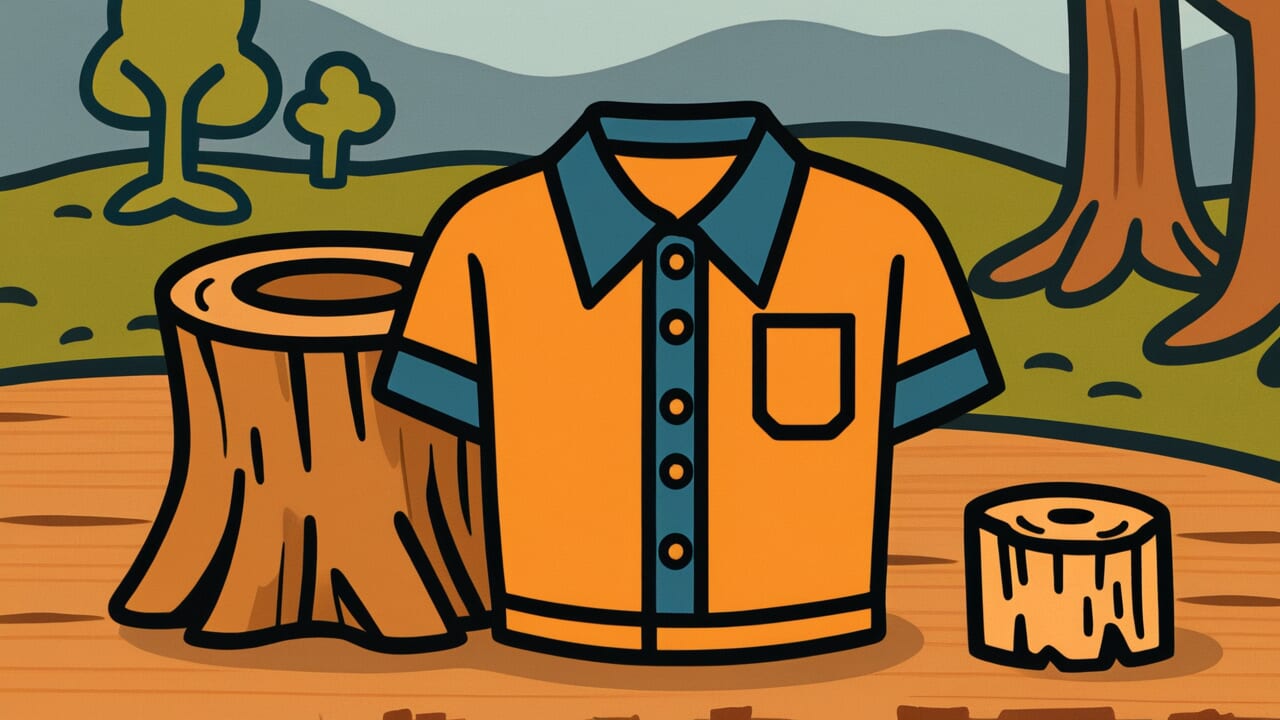How to Read “Even a tree stump looks good in fine clothes”
Kirikabu ni mo ishō
Meaning of “Even a tree stump looks good in fine clothes”
“Even a tree stump looks good in fine clothes” means that even worthless things can look impressive when decorated on the outside.
Something that originally has no value or importance can appear valuable and impressive at first glance when given superficial decoration. This proverb describes how human visual judgment works.
This saying is often used as a warning against judging things by appearance alone.
It also criticizes people or things that look good on the surface but lack real ability or substance.
In modern society, this expression applies to products with fancy packaging but poor contents. It also fits people with impressive titles or clothing but no real ability.
While appearance certainly has great power, this proverb teaches us the danger of relying on it alone.
Origin and Etymology
No clear written records remain about the origin of “Even a tree stump looks good in fine clothes.” However, analyzing the structure of this proverb reveals interesting discoveries.
A “tree stump” is the base part that remains after cutting down a tree. It was likely chosen as a symbol of something that has lost its function as a tree and serves no purpose.
“Fine clothes” are garments that make people look beautiful. The contrast between these two elements forms the core of this proverb.
Japan has long had the proverb “Even a packhorse driver looks good in fine clothes.” This means even a low-ranking packhorse driver looks impressive in fine clothing.
“Even a tree stump looks good in fine clothes” is thought to be an even more extreme version of this expression.
A packhorse driver is at least human, but a tree stump is the lifeless remains of a tree. By using an example of something even more worthless, the saying emphasizes the great power of appearance.
This expression may have emerged during the Edo period as a satirical comment on common culture that valued appearances and vanity.
The idea that even a useless tree stump looks impressive when decorated is thought to contain a satirical view of appearance-focused attitudes.
Usage Examples
- That restaurant is “even a tree stump looks good in fine clothes” – the interior is luxurious but the food is second-rate
- His proposal is “even a tree stump looks good in fine clothes” – the design is beautiful but the content is thin
Universal Wisdom
Behind the continued telling of “Even a tree stump looks good in fine clothes” lie two truths. One is the danger of human visual judgment. The other is the great power of that same judgment.
Humans instinctively begin judging from what they see first. This makes sense as a survival strategy.
To quickly determine if something is dangerous or safe, valuable or worthless, visual information is the fastest available. However, this convenient judgment method has a major pitfall. Appearance can be easily manipulated.
Even a tree stump, which serves no purpose at all, can look impressive when dressed in fine clothes.
This extreme example sharply points out the limits of human judgment. We think we’re calmly evaluating things, but we’re actually greatly influenced by superficial information.
At the same time, this proverb acknowledges the great power of appearance. The fact that a tree stump looks impressive in fine clothes doesn’t deny the effect of improving appearance.
Rather, it warns that caution is needed precisely because that effect is so large.
Our ancestors deeply understood that humans are creatures weak to appearances. That’s why they left this lesson for future generations.
When AI Hears This
In information theory, the information you really want to convey is called the “signal.” What interferes with it is called “noise.”
Dressing a tree stump in fine clothes is exactly the phenomenon of adding conspicuous decoration (strong noise) to a worthless object (weak signal), confusing the observer’s judgment.
The human brain has limits to how much information it can process at once.
For example, when seeing a product wrapped in fancy paper, people judge “this must be good” before examining the contents.
This happens because the brain prioritizes processing conspicuous information (the clothes) to reduce cognitive load. It skips verifying the essence (the quality of the stump).
Marketing research shows that package design influences about 70 percent of purchasing decisions.
Even more interesting is that as noise increases, signal detection accuracy drops exponentially.
Information spread on social media has the same structure. When sensational headlines or flashy images (clothes) are added, the number of people who verify the truth of the content (whether there’s a stump) drops dramatically.
If information senders intentionally exploit this cognitive bias, they can make things without essential value appear valuable.
This proverb pointed out the vulnerability of the human information processing system long before science developed.
Lessons for Today
“Even a tree stump looks good in fine clothes” teaches modern people two important perspectives.
The first is the perspective of being the judge. It’s important to develop the ability to see the essence without being fooled by appearances.
People posting glamorous lives on social media, people with impressive titles, products with luxurious packaging. When you encounter these, develop the habit of pausing to think.
What is the real value behind the appearance? By taking time to observe and evaluate from multiple angles, you can make wiser judgments.
The second is the perspective of being judged. This proverb doesn’t deny the effect of improving appearance. Rather, it acknowledges its great power.
What matters is the balance between appearance and substance. Don’t neglect the effort to polish your substance, while also properly maintaining your appearance.
This isn’t about deceiving yourself. It’s a means of correctly conveying your value.
Both appearance and substance are important. Just don’t get the priorities wrong. That’s the teaching of this proverb.



Comments